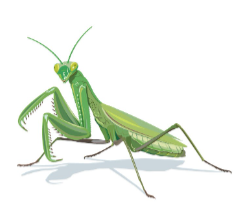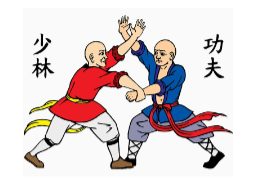History of Praying Mantis Kung Fu


The founder of Praying Mantis Kung-fu was a monk named Wong-Long who lived during the latter period of the Ming dynasty (1368-1644) and into the early Ching dynasty (1644-1912). He moved to Sung San and studied Kung fu in the Shaolin temple hoping that this might enhance his skills enabling him to serve the government. He learned seventeen different styles from various monks who were masters of the styles. Wong Long consistently sparred with his eldest si-hing daily attempting to better his skills. Unfortunately, Wong Long repeatedly found it impossible to defeat his si-hing. A frustrated Wong- Long swore that in three years he would be able to prove himself victorious.
Three years passed and Wong-Long found himself defeated again. One day his si-hing informed him that he was to be left in charge of the temple while his si-hing traveled to various cities for three years. His si-hing advised him to work hard and that he expected great improvement upon his return. Frustrated, Wong-Long spent many days alone in the woods reading while his elder was away. On one such occasion, he heard a grating sound up in the tree. He looked up and discovered a praying mantis in combat with a cicada. The mantis was fighting ruthlessly with his bent arms and chisel-like claws. Suddenly, the cicada was dead. Wong-Long took the mantis back to the temple and began to study it every day, taunting it with a straw and watching its hooking defenses. After careful observation of the mantis's use of his forelegs for attack and defense, Wong-Long systematized the movements into a series of boxing techniques. Next, he combined the new mantis techniques with the other seventeen styles he had previously studied with the mantis techniques being the eighteenth.
The next few months, Wong Long practiced his new style arduously. He found great difficulties executing the movements with limited footwork. Fortunately, he was able to solve this problem while in the forest watching some monkeys at play. He noticed the agility of the monkeys jumping and climbing with their hind legs. Thus, Wong-Long added these limber footwork patterns of the monkey to his new style. In the months to follow, Wong- Long pracbced various combinations of these techniques until he felt satisfied with the newly created Northern Praying Mantis System of Kung-fu.
When his si-hing returned to the temple, another match ensued. This time Wong Long found it easy to defeat his si-hing. Thus, Wong Long and his si-hing began practicing the style and perfecting it. Wong Long was then put in charge of teaching the style to only the most experienced kung-fu students at the temple. Subsequently, he arranged the techniques into a twelve key word formula and classified eight hard and twelve soft principles. Afterwards, he added eight attacking and non-attacking points.
Wong Long only had a few disciples that learned all that he had to teach and then instructed them to improve on the style. Each one of his disciples improved the style and, in some instances, added a name to the style reflective of the improvements. Thus, we have styles such as Seven Star, Six Harmonies, and Tai Chi Praying Mantis. (Also, Eight Step; Secret Door; Springy Leg; Plum Blossom; Rigid Mantis; Flat Plate; Dragging Hand and others.) Furthermore, there are the Southern styles of Mantis founded by Lee Siem, a monk of the Jock Lum monastery.
Seven Star Praying Mantis Boxing (Chinese: ; xïng tángláng quán) is arguably the most well-known, effective and practiced branch of Northern Praying Mantis. Seven Star Mantis combines elements of Hard and Soft methods, Long and Short attacks, internal and external principles. It is considered by many as the 'hardest' (and most brutal) of the Praying Mantis styles, but this association is misleading. A common saying, "Hide the hard in the soft," means both Hard and Soft are interwoven together. It is a devastating, no-nonsense style of combat that is rightfully labeled as a "complete" system of Chinese Martial Arts. This is thestyle that we teach.